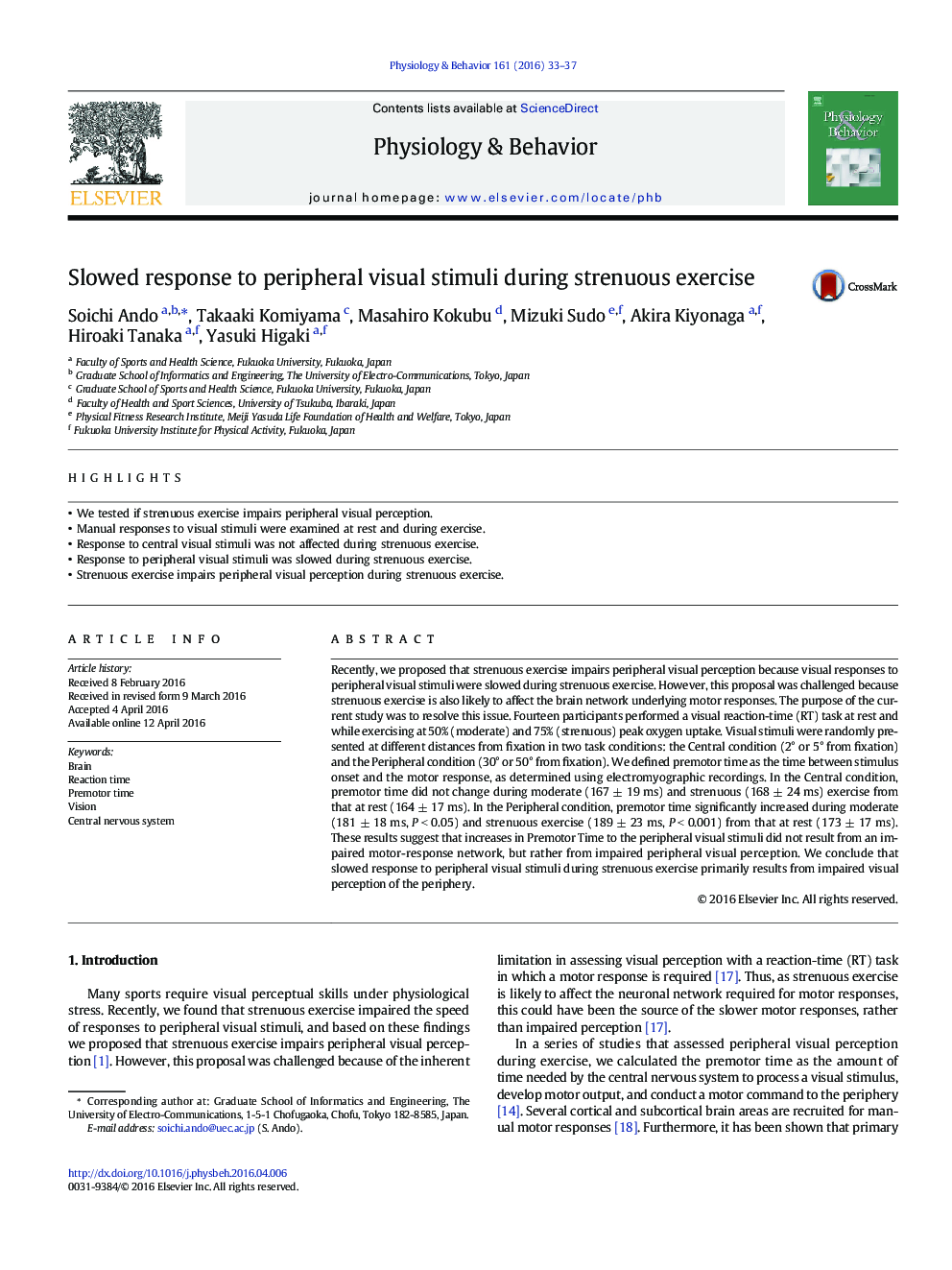| کد مقاله | کد نشریه | سال انتشار | مقاله انگلیسی | نسخه تمام متن |
|---|---|---|---|---|
| 2843871 | 1571157 | 2016 | 5 صفحه PDF | دانلود رایگان |
• We tested if strenuous exercise impairs peripheral visual perception.
• Manual responses to visual stimuli were examined at rest and during exercise.
• Response to central visual stimuli was not affected during strenuous exercise.
• Response to peripheral visual stimuli was slowed during strenuous exercise.
• Strenuous exercise impairs peripheral visual perception during strenuous exercise.
Recently, we proposed that strenuous exercise impairs peripheral visual perception because visual responses to peripheral visual stimuli were slowed during strenuous exercise. However, this proposal was challenged because strenuous exercise is also likely to affect the brain network underlying motor responses. The purpose of the current study was to resolve this issue. Fourteen participants performed a visual reaction-time (RT) task at rest and while exercising at 50% (moderate) and 75% (strenuous) peak oxygen uptake. Visual stimuli were randomly presented at different distances from fixation in two task conditions: the Central condition (2° or 5° from fixation) and the Peripheral condition (30° or 50° from fixation). We defined premotor time as the time between stimulus onset and the motor response, as determined using electromyographic recordings. In the Central condition, premotor time did not change during moderate (167 ± 19 ms) and strenuous (168 ± 24 ms) exercise from that at rest (164 ± 17 ms). In the Peripheral condition, premotor time significantly increased during moderate (181 ± 18 ms, P < 0.05) and strenuous exercise (189 ± 23 ms, P < 0.001) from that at rest (173 ± 17 ms). These results suggest that increases in Premotor Time to the peripheral visual stimuli did not result from an impaired motor-response network, but rather from impaired peripheral visual perception. We conclude that slowed response to peripheral visual stimuli during strenuous exercise primarily results from impaired visual perception of the periphery.
Journal: Physiology & Behavior - Volume 161, 1 July 2016, Pages 33–37
